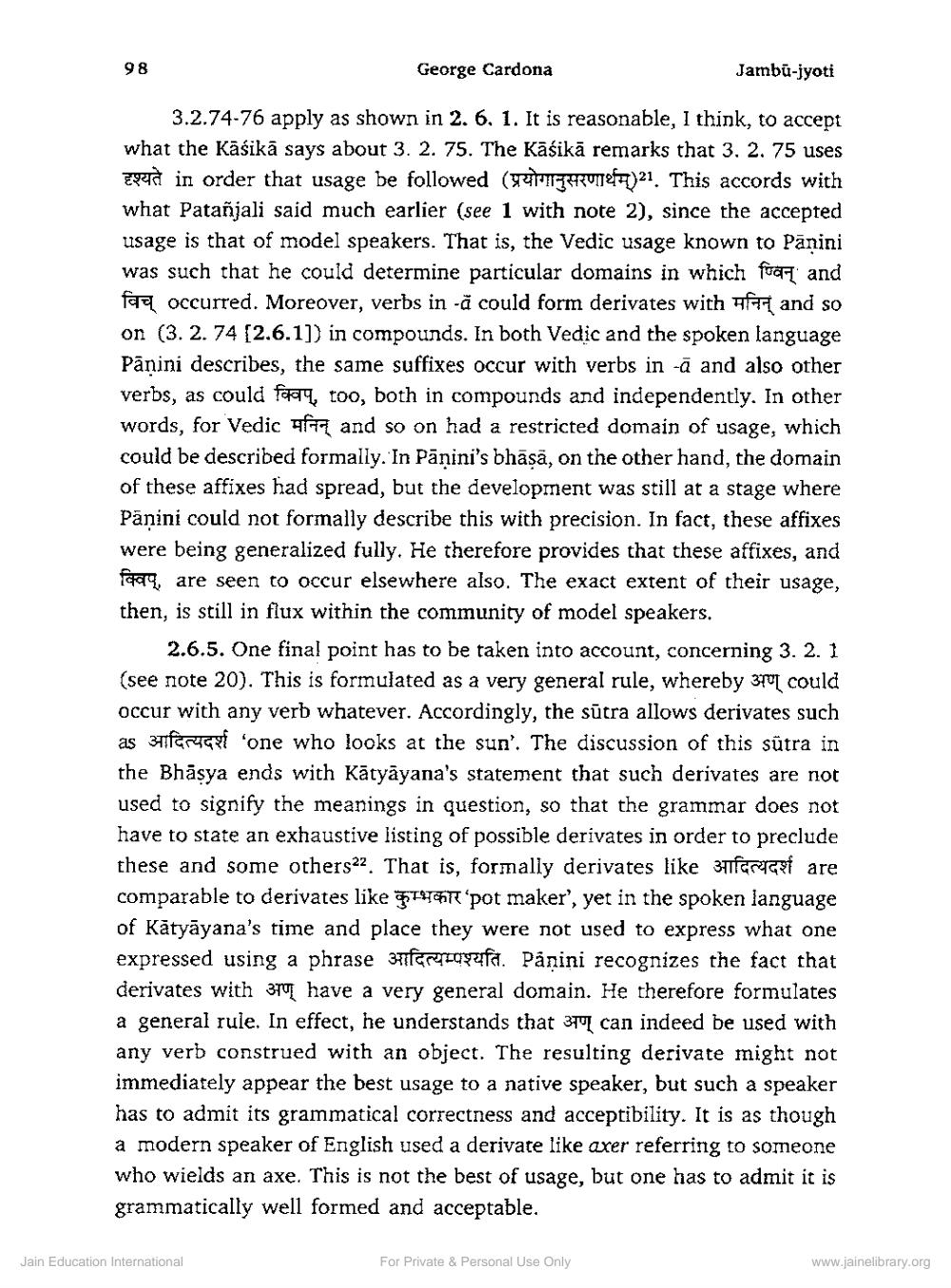________________
98
George Cardona
Jambū-jyoti
3.2.74-76 apply as shown in 2. 6. 1. It is reasonable, I think, to accept what the Kāśikā says about 3. 2. 75. The Kāśikā remarks that 3. 2. 75 uses दृश्यते in order that usage be followed (प्रयोगानुसरणार्थम्)21. This accords with what Patañjali said much earlier (see 1 with note 2), since the accepted usage is that of model speakers. That is, the Vedic usage known to Panini was such that he could determine particular domains in which fua and fare occurred. Moreover, verbs in -ă could form derivates with off and so on (3. 2. 74 [2.6.1]) in compounds. In both Vedic and the spoken language Pānini describes, the same suffixes occur with verbs in ā and also other verbs, as could feary, too, both in compounds and independently. In other words, for Vedic f and so on had a restricted domain of usage, which could be described formally. In Panini's bhāsā, on the other hand, the domain of these affixes had spread, but the development was still at a stage where Panini could not formally describe this with precision. In fact, these affixes were being generalized fully. He therefore provides that these affixes, and 499, are seen to occur elsewhere also. The exact extent of their usage, then, is still in flux within the community of model speakers.
2.6.5. One final point has to be taken into account, concerning 3. 2. 1 (see note 20). This is formulated as a very general rule, whereby 3t could occur with any verb whatever. Accordingly, the sūtra allows derivates such as 3 frugs 'one who looks at the sun'. The discussion of this sütra in the Bhāsya ends with Kāryāyana's statement that such derivates are not used to signify the meanings in question, so that the grammar does not have to state an exhaustive listing of possible derivates in order to preclude these and some others22. That is, formally derivates like frigs are comparable to derivates like it pot maker', yet in the spoken language of Katyāyana's time and place they were not used to express what one expressed using a phrase 371fcrerrogafa. Panini recognizes the fact that derivates with 3m have a very general domain. He therefore formulates a general rule. In effect, he understands that 37 can indeed be used with any verb construed with an object. The resulting derivate might not immediately appear the best usage to a native speaker, but such a speaker has to admit its grammatical correctness and acceptibility. It is as though a modern speaker of English used a derivate like axer referring to someone who wields an axe. This is not the best of usage, but one has to admit it is grammatically well formed and acceptable.
Jain Education International
For Private & Personal Use Only
www.jainelibrary.org




